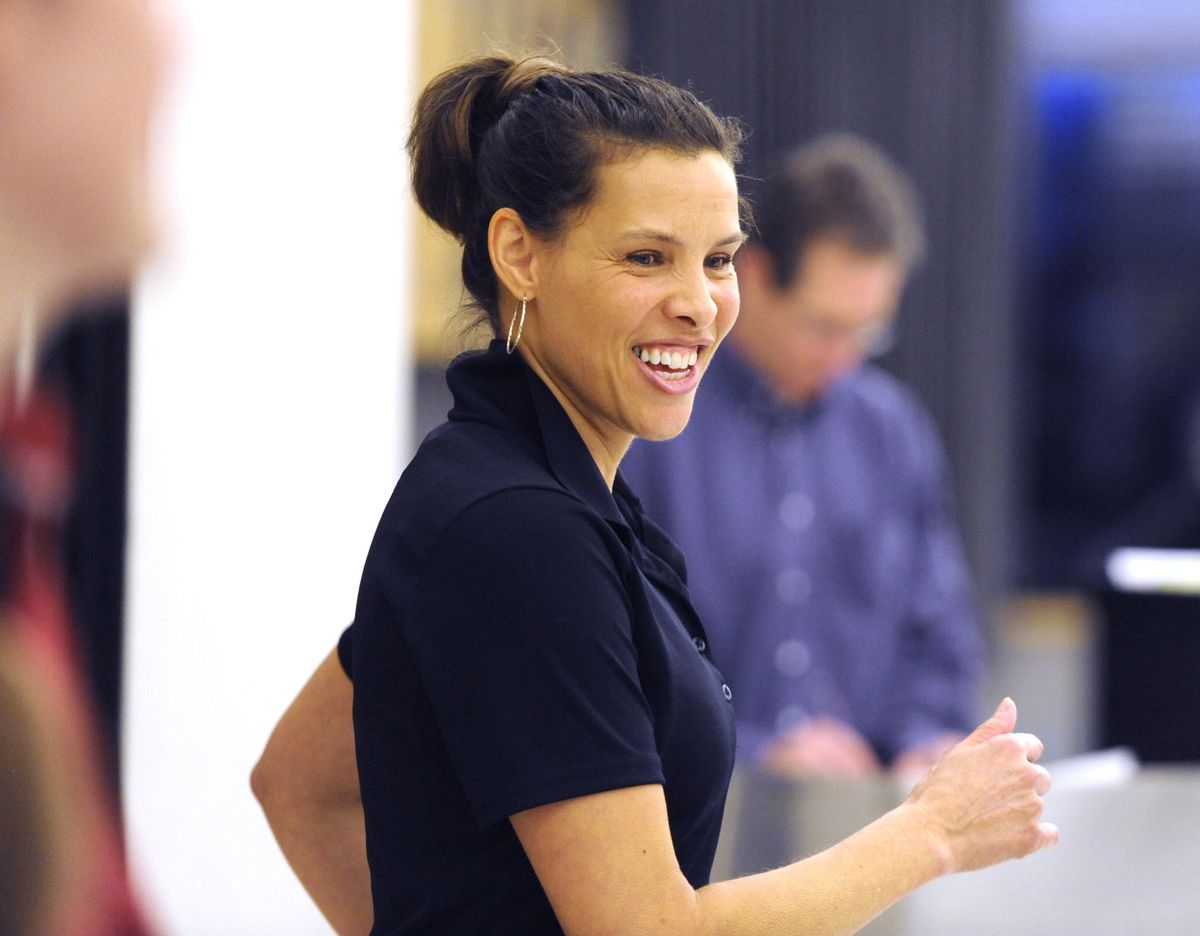Exercises in health
WSU’s nutrition and exercise physiology program guides real people on exercise and diet through rigorous classes
From left, nutrition and exercise physiology student Ali McCoy helps lead a step class as Michelle Timmerman and Rachel Hutchins participate in the free fitness class at the WSU nutrition and exercise physiology program on the Riverpoint Campus. (Jesse Tinsley)Buy a print of this photo
It takes more than muscle tone and stretchy pants to teach an exercise class.
The instructors leading a class last week at WSU Spokane on the Riverpoint Campus were being observed by their own instructors as they led participants through tai chi and step routines. The students earned approval for their “cueing” – warning participants what moves were coming next, while offering adapted exercises based on participants’ aches and pains.
“If you have any lower back issues, you want to be really careful not to go lower than a half-squat,” graduate student Lisa Brown told the class of 10 as they stepped and kicked, bouncy pop music in the background, during the noon hour. “Keep your back upright.”
For students in WSU’s growing nutrition and exercise physiology program, the exercise classes offer a lab experience, connecting them with real people seeking to improve their health through exercise and diet. For participants, the class – along with a one-on-one “lifestyle coaching” program – offers free workouts and the chance to create exercise and nutrition plans under the guidance of the next generation of registered dietitians and clinical exercise specialists.
A third part of the clinic, a group weight-loss program focusing on healthy eating and exercise, costs $50.
Becky Erickson, a 43-year-old surgery scheduler from Spokane, planned to use everything the clinic has to offer.
She talked about her health history and how to control food portions during a one-on-one coaching session last week with student Kelsey Kommes, as the clinic kicked off for the semester. This week, Erickson will undergo baseline testing – doing pushups and sit-ups, stepping onto a treadmill while students track her heart rate and oxygen rate.
Erickson said she wants to lose weight, but her main goal is to gain energy by getting healthier. The students “are kind of like little cheerleaders, which is kind of what I need,” she said.
WSU’s undergraduate nutrition and exercise physiology program started in 2005. It has since added master’s and doctoral degrees, and is growing fast.
The number of seniors in the program – who work in the clinic alongside graduate students – doubled this year, instructor Judy Knuth said. The program’s graduates will work in hospitals and rehab facilities, counseling patients in nutrition and exercise. Others might work in food service, sports nutrition or public health.
They’ll be in demand, thanks in part to rising diabetes and childhood-obesity rates and aging-related health problems suffered by baby boomers, said Kevin Dolan, another instructor.
Many people are getting health and nutrition misinformation online, or “from Muscle & Fitness or their neighbor,” Dolan said. Students who become exercise physiologists will “work with clients who are anywhere from healthy to high risk and write them an exercise prescription for their needs.”
After graduation, Brown – an Air Force veteran – hopes to do rehab work with wounded veterans, especially those who’ve suffered brain injuries as the result of explosions in combat.
Researchers have found that resistance training and cardiovascular exercise can regenerate brain cells in injured veterans’ brains, Brown said.
For that kind of work, you can only practice on your classmates – taking the fictional case histories of pretending to be pregnant or osteoporosis sufferers, for example – so much, students said.
“This program provides the opportunity to get outreach into the community and put what we’ve learned into practice,” graduate student Ali McCoy said.


